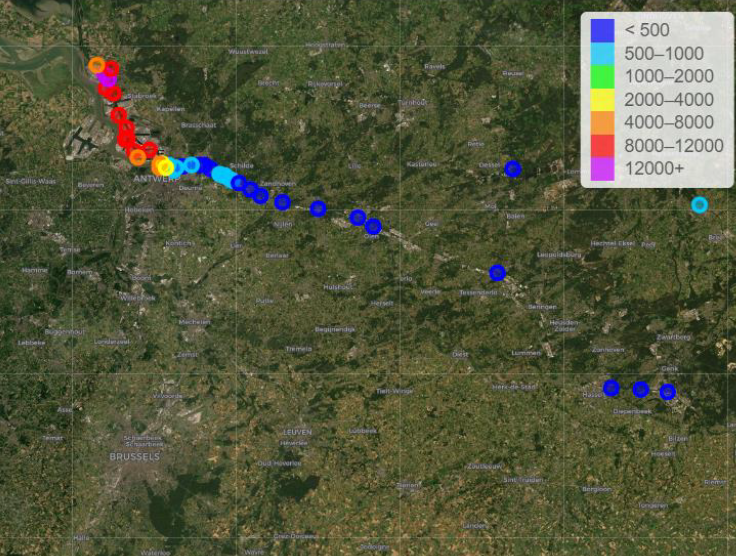The recent floods in the south of our country had a strong influence on the local water supply. But not only in that area. The polluted flood water flowed straight into the Meuse river through the tributaries, and the Meuse river flows into the Albert canal. Flanders is largely dependent on the Albert canal for her drinking water supply. The quality of that water is monitored by a sensor network that has been installed by VITO, in the framework of the Aquaspice project. Until this moment it is not likely that the quality of the water of the Albert canal is affected by the floods.
The direction of water of simple: it flows towards the sea. Also the water of the Walloon region where flooding at the end of July 2021 has caused absolute tragedies. After the heavy weather in the south of the country an enormous amount of water flowed toward the Meuse. This Meuse water continues to flow into the Albert canal, a canal of 120 kilometers long that connects Liège to Antwerp and the Meuse with the Scheldt.
“That water turned over sediments and carried waste. Therefore, in the Netherlands drinking water companies have temporarily closed their water supply points, not to take in any polluted water”, says Senne Van Rompaey, spokesman of Water-link. Water-link supplies drinking water to Antwerp and the suburbs, but also to other drinking water companies. In short: 40 per cent of the drinking water that flows through the taps in Flanders, is (in)directly supplied by Water-link.
Water-link purifies the water of the Albert canal, so it is crucial to closely monitor the quality of this water. That is also why Water-link has screened the whole route of the polluted water, from the beginning of the Albert canal in Liège up to Antwerp and has taken additional samples. Because Water-link exactly knows the speed of the water, they can predict perfectly when water that ends up in the Albert canal in Liège, will pass by in Antwerp. The sensor network that Water-link has installed together with VITO in the framework of drought, is crucial. The Albert canal has about 40 sensors that can measure, among other things, the salinity. When it is very dry, the water becomes saltier and it can not yet be processed by the purification installations of Water-link. When the water is strongly diluted because of rainwater – which is the case for flood water that flows in massively – the salinity is reduced. The sensors then measure a low salinity.
“The sensor network is indeed crucial for this monitoring”, also says Nele Desmet of VITO. “VITO and Water-Link have built a network of 45 CTD sensors along the entire route – in Antwerp, in the Albert canal and upstream – and VITO manages the complete data analysis of the details provided by the sensors. We have developed dashboards and a warning system that notifies Water-link immediately when deviant results are being noted.”
As a consequence of the floods in the Walloon region, the quality of the water will be monitored more closely and Water-link will provide more samples. After all, water flows two to four kilometres each day so the water from Liège will only reach Antwerp after 40 days. Nevertheless, according to the current data, there is no risk. The largest part of the polluted water has flown directly to the Meuse in the Netherlands. The water that continues to flow to Antwerp is very diluted by the rain of the last weeks and because of the long route it has taken, the waste in the water has sunk to the bottom.
https://aquaspice.eu/case-study-3/



